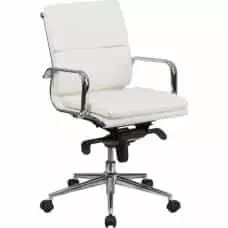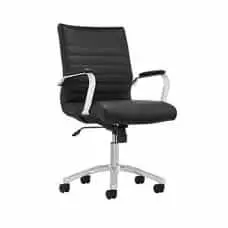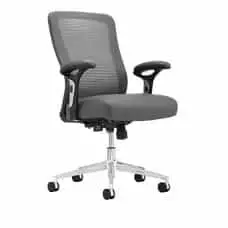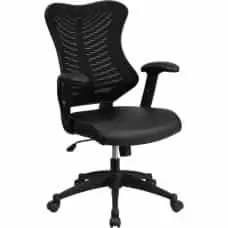We recently interviewed Robert Moutal:
Robert Moutal is the Co-Founder and Director of Client Happiness at Clarity Wave, an employee engagement software system. Prior to Clarity Wave, Robert worked in the TV and Radio industry for over 17 years both in creative capacities as well as general management. He is also a produced playwright and a 16-time Emmy Award winning TV producer.
Can you give a quick overview of what you do professionally and why you do it? What do you find most meaningful about your work?
Robert: For the past 17 years I worked at a Spanish TV company in San Diego. During my time there I worked in all areas of the company, from production to on-camera talent to General Manager of one of the stations and all the way up to Vice President. During my tenure as General Manager I was always looking for ways to make the workplace climate more fun and engaged. We launched an Employee of the Month program called “Caught Doing the Right Thing” in which employees would write on a piece of paper about something good they saw a teammate doing and then post it on a corkboard. Then, at the end of each month the winner would receive all kinds of prizes, including a $100 bill, VIP parking for a month, a steak lunch with the GM and public recognition.
We also put together a Fun Committee whose sole purpose was to plan a fun couple of hours every month. We had Tacos and Piñatas, Halloween Costume Contests, Games of Skills at the parking lot and everyone responded really well.
However, everything came to an abrupt end the second I was promoted to VP of Creative Marketing Solutions and someone else took over as the head of the station group. This new person had a clear mandate from the Corporate Office: Just focus on sales.
Within a few days of her taking over, the Fun Committee was dismantled, the “Caught Doing the Right Thing” corkboard was taken down and the stick, used to crack the piñata open, was thrown in the garbage.
Needless to say, morale went down among the non-sales team members who were, all of a sudden, feeling like they had been demoted to second-class citizens. They felt the new manager did not really care for their wellbeing as much as she did for that of the sales team.
It was then that I decided, along with my brother, to create Clarity Wave, a software company dedicated to measuring and improving the workplace climate, culture and employee engagement of other companies.
Today, as an entrepreneur, I wear many hats. I help design new features for our software system, I produce help and promotional videos and tutorials and provide support for all our clients and their staff. But mainly, I’m in charge of bringing in new clients.
How important do you believe company culture is to an organization’s success?
Robert: Company culture is everything. Whether it’s a good culture or a toxic one, every company has one and, in all my years of corporate experience I realized one very important thing: The company’s culture is driven only by the CEO or the owner and no one else. Upper and middle management can only help drive and improve the workplace climate but they will never be able to change the culture without the complete buy-in and involvement of the Head Honcho.
Without naming the companies, can you give examples of good cultures you have worked in and bad cultures you have worked in and how they have led to positive and negative results respectively?
Robert: In our line of work we come across some amazing examples of different company cultures. Some are really great and others not so much. Here are a few notable ones that shall remain anonymous, to protect the innocent:
The Great:
Company: A family-owned construction safety equipment manufacturer in Australia. About 80 employees.
What’s great about them:
Our employee engagement system includes a feature in which users earn points when they answer weekly surveys which they can then trade for prizes that each company defines (e.g. gift cards, company swag, free vacation days, flowers, pizzas, etc.). Whereas all our other clients allow team members to “get” something, this client also encourages them to “give” something. They do this by creating a prize called “$100 Donation from the company”. When employees trade in their hard-earned points for this prize the company donates money to the employee’s favorite charity. We love this organization because they really walk their talk. Their website includes a whole section about some of the charities they actively support and, in their own words:
“We want to make a difference, not only in the workplace, but in the broader community which is why we actively donate to a variety of charities. Operation Drought Relief, Australia's Biggest Morning Tea, Guide Dogs Victoria, Rapid Relief Team, Steptember - Cerebral Palsy Alliance... “ and many more.
Company: A chain of banks in Kuwait, Egypt and the UAE. About 2,000 employees.
What’s great about them:
This company really gets “Employee Engagement”. They are the only client we have that has literally built a kiosk in their corporate lobby with a large touch screen TV i which all the employees can login and answer the weekly surveys. They also print huge checks in order to recognize the top employees with extra points. In return, they have received over 200 suggestions from the team members on our interactive suggestion box (keep in mind that most of our other clients are lucky if they receive a handful of suggestions). Some of the ideas shared by the employess offer cost-cutting ideas, training programs, marketing tips, etc. Middle-Eastern companies are quickly catching up with Western companies when it comes to creating unique corporate cultures.
The Ugly:
Company: A clothing manufacturer in Mexico City. About 150 employees.
What was wrong with them:
This former client was the typical case of “do as I say, not as I do”. When they hired a corporate coach, who then recommended our system to measure their employee engagement, their whole attitude was akin to handing an iPad to a kid so they would stay quiet during dinnertime. The owners of the factory were not the kind of servant leaders that genuinely cared about the welfare of their employees, but were rather, they were simply looking for a “silver bullet” to fix all their staff problems, including a massive turnover rate. This became evident during the end-of-training luncheon in which all the rank-and-file were seated in round tables and served the typical “rubber chicken” entree while the owners sat on a long table on top of a stage, overlooking the whole staff and being served salmon and steak.
Company: A battered women shelter in Toronto, Canada. About 35 employees.
What was wrong with them:
I would have imagined that an organization that cares for women and children going through the most difficult and traumatic time in their lives would be a cohesive and harmonic team. Well, nothing could have been further from the truth. We have a metric in our system we call the “Toxicity Level” which is a percentage of the employees in a company that receive a score below 5 on our main indicator. Most of our clients oscillate between 0.5% and 2% toxicity but this particular organization had a toxicity level of over 70%. They were basically radioactive! This meant that around 24 employees were being evaluated with the lowest possible scores by the rest of their peers. In short, this organization was like a viper’s nest where everyone fostered a destructive culture and pointed fingers constantly.
What is the company that you have worked for or with that you believe has the best culture and why? What can other companies do to emulate their success?
Robert: We work very closely with a tax law firm out of Las Vegas of about 210 employees. They are our clients and we are theirs. This is the company I talk about the most during my demos to other clients as they have learned to create a culture where everyone recognizes each other and promotes open communication and idea-sharing. One would never think of a tax law firm as a “fun” company but these guys really know how to create an amazing work culture. I attribute their success mainly to the CEO’s involvement with our system. Not only does he participate every single week, answering the same surveys as the rest of the employees, but he also takes advantage of some of the virtual Stickers and public recognition we make available to them and he is constantly offering public recognition to everyone who works with him.
What is the company that you have never worked for or with but believe has the best culture? What are about that company’s culture do you admire from afar?
Robert: I once took the tour of Zappos in Las Vegas and was surprised to see how so many people would move hundreds of miles just to take a $15/hr job putting shoes in boxes just for the culture. This is a company that, rather than hiring for skill, hire for fit and they’ve come to realize that a bad hire can cost the company a lot of money. So much so that, in fact, they offer new employees $5,000 to quit. Few of them take the offer.
Describe your office environment and how it relates to your company culture. Give us a feel for your office design from the office furniture design to the intangibles.
Robert: Our company is and has been distributed from day one and for the past 5 years. My partners live in Cancun and Switzerland and our Sales, Development and Support teams are located in Portugal, Argentina, Mexico, Philippines and India. This means that everyone works from home or a co-work space.
What do you believe are the key elements to creating and maintaining an uplifting office environment?
Robert: Since my home office is where I spend about 12 hours every day I have a very comfortable executive chair, a Varidesk standing desk and a really good tea kettle that has different temperatures for all the types of tea I like to drink during the day.
What does ergonomics mean to you? How has your knowledge of ergonomics impacted your work?
Robert: Good ergonomics means that I can work for longer hours while trying to take our business to the next level. The combination of sitting, standing and taking frequent breaks and maybe go for a 10-15 minute walk every few hours helps me keep my sanity.
How do you buy office furniture? Do you buy furniture online? When do you decide to buy?
Robert: Other than my chair, which I purchased at a furniture store, all my furniture was bought online.
What office chair do you sit in and why? What specific features about your office chair do you appreciate and enjoy? And how would you weigh the relative importance of comfort, posture support, design, cost and other variables?
Robert: I use a LaZBoy executive chair that is super soft and has a very thick cushion. It allows me to get fully immersed in my work without having to constantly shift my body.
What is your best advice on maximizing productivity in the office?
Robert: Developing good rituals is key to being productive. I have to send tons of prospecting emails to new leads every day as well as book demos, meetings and support sessions. I developed a little game to help me get through all of these faster. I bought a box of poker chips and, for every demo, new prospect email, follow up message and support call, I transfer a different colored chip from the box onto my desk. At the end of the day I can easily see how productive I truly was. The physical action of moving the chip from one place to another also activates the dopamine center in my brain and gives me a “little victory” every time.
What is your best advice on effectively managing others?
Robert: Be a good listener. Ask good questions and always, always, always look for ways to make your subordinates’ work easier. Being a servant leader is all about empowering other to do their best work.
What workplace trends do you see on the horizon? Leave us with three things we should be on the lookout for.
Robert: More and more companies are allowing employees to work remotely. This is one of the most popular prizes our clients have on their Prize Stores. Remote communication is becoming more and more ubiquitous in the workplace and meetings can be far more productive when people can share their screens with others.
Another big trend we see is the reduction of psychological stress factors in the workplace. Countries like Mexico and Spain have passed legislation that requires companies of all sizes to conduct regular employee surveys to determine the risk factors that may exist. Things like work-life imbalance and hostile work environments are slowly disappearing.









